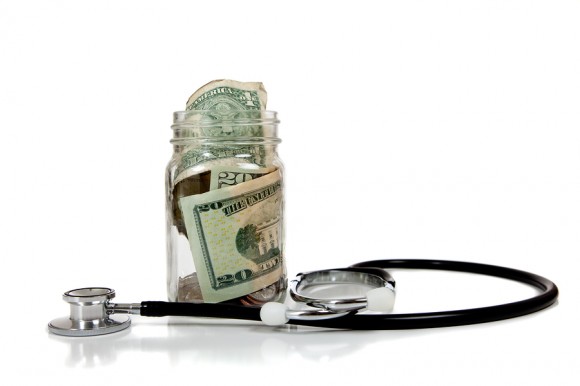In 2016, overall growth in national spending on healthcare slowed in 2016, increasing 4.3 percent following 5.8 percent growth in 2015, according to a report by actuaries with the Centers for Medicare & Medicaid Services (CMS).
Following Affordable Care Act (ACA) coverage expansion and significant retail prescription drug spending growth in 2014 and 2015, health care spending growth decelerated in 2016. The report concludes that the 2016 expenditure slowdown was broadly based as growth for all major payers (private health insurance, Medicare, and Medicaid) and goods and service categories (hospitals, physician and clinical services, and retail prescription drugs) slowed in 2016.
During 2014 and 2015, the health spending share of the economy increased 0.5 percentage point from 17.2 percent in 2013 to 17.7 percent in 2015. The increases in the health spending share of the economy in 2014 and 2015 were largely due to coverage expansion that contributed to 8.7 million individuals gaining private health insurance coverage and 10.2 million gaining Medicaid coverage over the period and to significant growth in retail prescription drug spending. Health care spending grew 1.5 percentage points faster than the overall economy in 2016, resulting in a 0.2 percentage-point increase in the health spending share of the economy – from 17.7 percent in 2015 to 17.9 percent in 2016.
Additional information from the report:
- Private health insurance spending increased 5.1 percent to $1.1 trillion in 2016, which was slower than the 6.9 percent growth in 2015. The deceleration was largely driven by slower enrollment growth in 2016 after two years of faster enrollment growth due to ACA coverage expansion.
- Medicare spending grew 3.6 percent to $672.1 billion in 2016, which was slower growth than the previous two years when spending grew 4.8 percent in 2015 and 4.9 percent in 2014. The slower growth in 2016 was due to slower growth in spending for both Medicare fee-for-service (2.2 percent in 2015 compared to 1.8 percent in 2016) and Medicare Advantage (11.1 percent in 2015 compared to 7.4 percent in 2016).
- Medicaid spending growth slowed in 2016, increasing 3.9 percent to $565.5 billion. State and local Medicaid expenditures grew 3.2 percent in 2016, while federal Medicaid expenditures increased 4.4 percent in 2016. The slower overall growth in Medicaid spending was much lower than in the previous two years, when Medicaid spending grew 11.5 percent in 2014 and 9.5 percent in 2015. The higher growth in 2014 and 2015 was due in part to the initial impacts of the ACA’s expansion of Medicaid enrollment during that period.
- Out-of-pocket spending includes direct consumer payments such as copayments, deductibles, and spending not covered by insurance. Out-of-pocket spending grew 3.9 percent to $352.5 billion in 2016, faster than the 2.8 percent growth in 2015. Additionally, 2016 was the fastest rate of growth since 2007 and was higher than the average annual growth of 2.0 percent during 2008-15. The faster growth in 2016 was due in part to a continued shift towards enrollment in high-deductible health plans, which was somewhat offset by a continued decrease in the number of uninsured in 2016.
- Retail prescription drug spending slowed in 2016, increasing 1.3 percent to $328.6 billion. The slower growth in 2016 follows two years of significant growth in 2014 and 2015, 12.4 percent and 8.9 percent, respectively. This significant growth in 2014 and 2015 was largely attributable to increased spending on new medicines and price growth for existing brand-name drugs, particularly for drugs used to treat hepatitis C. Growth slowed in 2016 primarily due to fewer new drug approvals, slower growth in brand-name drug spending as spending for hepatitis C drugs declined, and a decline in spending for generic drugs as price growth slowed.
In 2016, the federal government and households accounted for the largest shares of spending (28 percent each) followed by private businesses (20 percent), state and local governments (17 percent), and other private revenue (7 percent). After two consecutive years of rapid growth (10.9 percent in 2014 and 8.9 percent in 2015), federal government spending for health care slowed, increasing 3.9 percent in 2016. The primary reason for the deceleration in federal spending growth in 2016 was federal Medicaid spending, which grew more slowly in 2016 as a result of less Medicaid enrollment growth.
THE NATION’S HEALTH DOLLAR ($3.3 TRILLION), CALENDAR YEAR 2016: WHERE IT CAME FROM AND WHERE IT WENT
Source: CMS Report
Was this article valuable?
Here are more articles you may enjoy.



 Alliant Latest to Sue Howden US Over Alleged ‘Smash-and-Grab’ Poaching
Alliant Latest to Sue Howden US Over Alleged ‘Smash-and-Grab’ Poaching  10 Highest Class-Action Settlements in 2025 Eclipsed $70B Total: Duane Morris
10 Highest Class-Action Settlements in 2025 Eclipsed $70B Total: Duane Morris  Supreme Court Rejects Challenge to $2.46B Boy Scouts Sex Abuse Settlement
Supreme Court Rejects Challenge to $2.46B Boy Scouts Sex Abuse Settlement  Consumer Acceptance of Telematics Widens, Says Survey
Consumer Acceptance of Telematics Widens, Says Survey 

